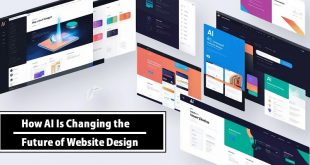Stay ahead of the curve with our insights on future trends in web design, empowering you to create content for the next generation of internet users.
The landscape of web design is rapidly evolving, not just in terms of aesthetics and functionality but also in its audience. The next generation of internet users—children growing up with technology in their hands from an early age—is already influencing how web designers think about and create content. This shift presents a unique opportunity for web designers and developers to pioneer innovative approaches that cater to this digitally native generation. This article explores the impact of Generation Alpha on web design and how devices specifically designed for them, such as kid-friendly smartphones, are shaping the future of online content creation.
Future Trends in Web Design:
Understanding Generation Alpha
Generation Alpha, the cohort born from 2010 onwards, represents the forefront of digital evolution. As the first group entirely born into the 21st century; these children are immersed in technology from their earliest moments. Unlike previous generations; for whom digital technology was an adopted element of their lives; it is as natural as breathing for Alpha kids. Their early and intuitive interaction with screens shapes not just their entertainment choices but also their learning patterns, social interactions, and even the development of cognitive skills.
This unprecedented comfort with technology is setting new standards for user experience and interface design and pushing the envelope on what constitutes engaging content. They are adept at navigating complex interfaces; have expectations for instant gratification, and look for interactive and immersive experiences. Designers are thus challenged to create digital environments that are safe and navigable for young minds and richly interactive and educational. The unique behaviors and preferences of Generation Alpha are quickly becoming a primary consideration in the development of new apps, websites, and digital services; marking a significant shift in how digital content is conceptualized and delivered.
The Role of Mobile Devices in Shaping Web Content
The widespread use of mobile devices among children is profoundly transforming the landscape of web content. Today’s smartphones and tablets, with their myriad of kid-friendly features, have become indispensable tools for both leisure and education. They serve as a primary means through which Generation Alpha accesses the internet; influencing not just the type of content they consume but also the manner in which it is presented. The design of these devices takes into account the specific needs and safety concerns of younger users; incorporating durable materials, simplified user interfaces, and robust parental controls. As a result, these devices are not merely gateways to the vast digital world but curated experiences that offer educational apps, age-appropriate games, and customized content that promotes learning and development.
This shift towards mobile-centric content consumption demands that web developers and designers prioritize mobile-friendly designs that are responsive, accessible, and engaging for the youngest users. Furthermore, the integration of mobile technology in education highlights the potential for smartphones and tablets to serve as powerful platforms for interactive learning; underscoring the need for content that is not only entertaining but also educational and empowering for children. This trend underscores the growing importance of mobile optimization in web design; ensuring that content is both reachable and meaningful and enriching for the next generation of users.
Designing with Young Users in Mind
Creating web content for children requires a thoughtful approach that balances engagement with safety. Web designers must consider:
- Simplicity and Intuitiveness: Websites and apps should have simple, intuitive interfaces that accommodate young users’ developing motor skills and cognitive abilities.
- Visual Appeal: Bright colors, animations, and interactive elements can make digital platforms more engaging for children. However, designers must ensure that these features do not overwhelm or distract.
- Safety and Privacy: Given the young age of these users, safety and privacy are paramount. Web content should be designed to protect children from inappropriate material and ensure that their personal information is secure.
- Educational Value: With parents increasingly looking for content that offers more than just entertainment, incorporating educational elements into games, stories, and activities can add value.
The Influence of Kid-First Designed Products
In the realm of digital design, understanding the influence of kid-first-designed products is paramount. These products, ranging from smartphones to tablets and even wearables; are specifically tailored to younger users’ needs, safety, and educational development. They often incorporate features like restricted internet access, controlled app usage, and GPS tracking for parental oversight; setting a new standard for what constitutes a child-friendly digital experience.
This shift towards creating products with children in mind reflects a broader trend in the digital ecosystem. It signifies a growing market segment that demands content that is not just engaging and interactive but also educational and tailored to be consumed on devices designed to safeguard children’s digital experiences. For web designers and developers, this trend underscores the necessity of adopting content creation strategies that align with the functionalities and limitations of these kid-first products.
Looking Ahead: The Future Trends in Web Design for Young Users
As technology continues to advance, the expectations and behaviors of Generation Alpha will increasingly influence web design trends. Designers must stay ahead of these changes, creating content that is not only visually appealing and engaging for young users but also fosters a safe and positive online experience. The integration of emerging technologies like augmented reality (AR) and virtual reality (VR) into educational content offers exciting possibilities for interactive learning experiences tailored to young digital natives.
The rise of devices designed for kids clearly indicates the direction in which web content creation is headed. For web designers and developers, this represents an opportunity to innovate and create digital experiences that cater to the next generation of Internet users. By prioritizing simplicity, safety, and educational value; we can ensure that our digital future is bright, secure, and enriching for children worldwide.
 free html design Free html design templates
free html design Free html design templates






